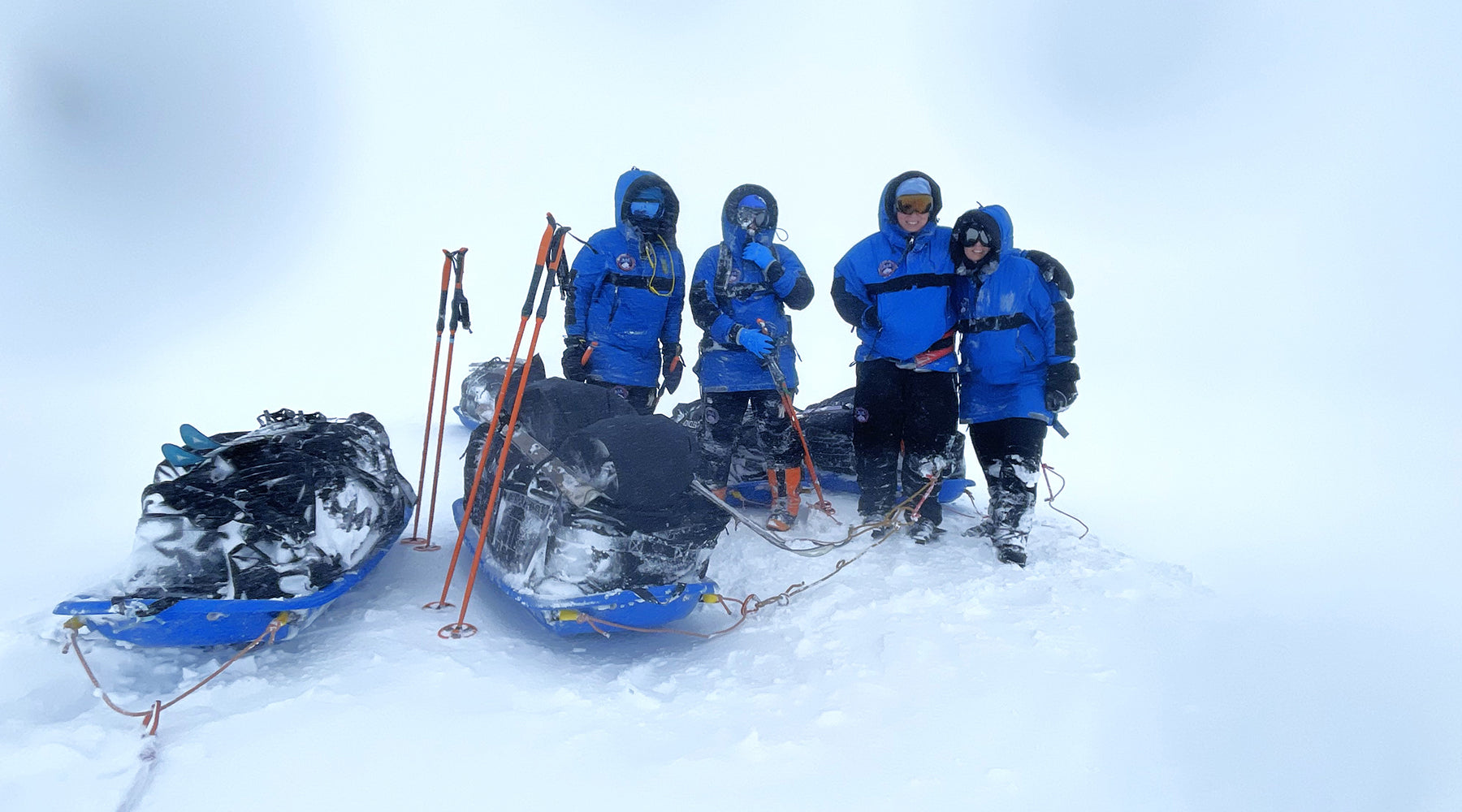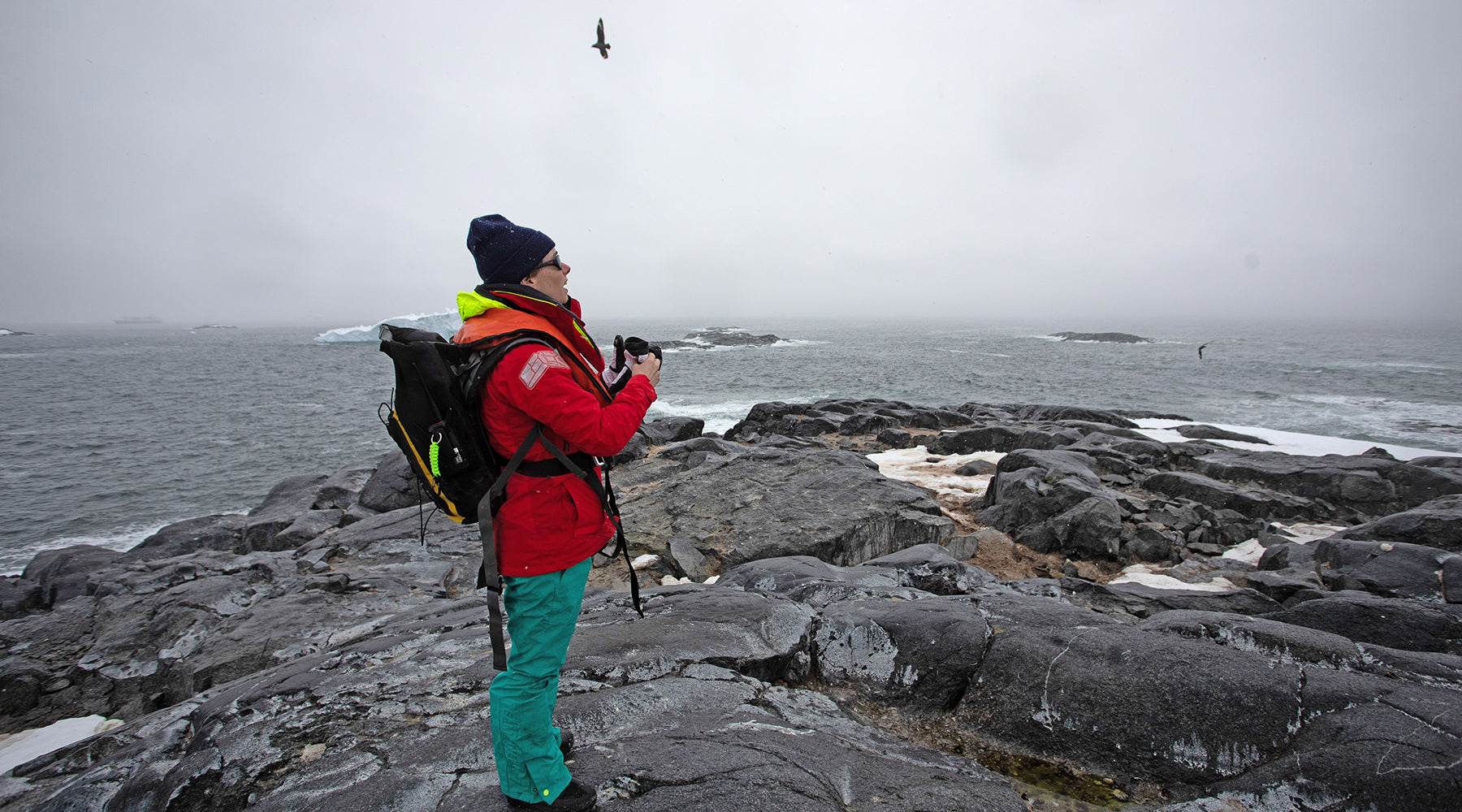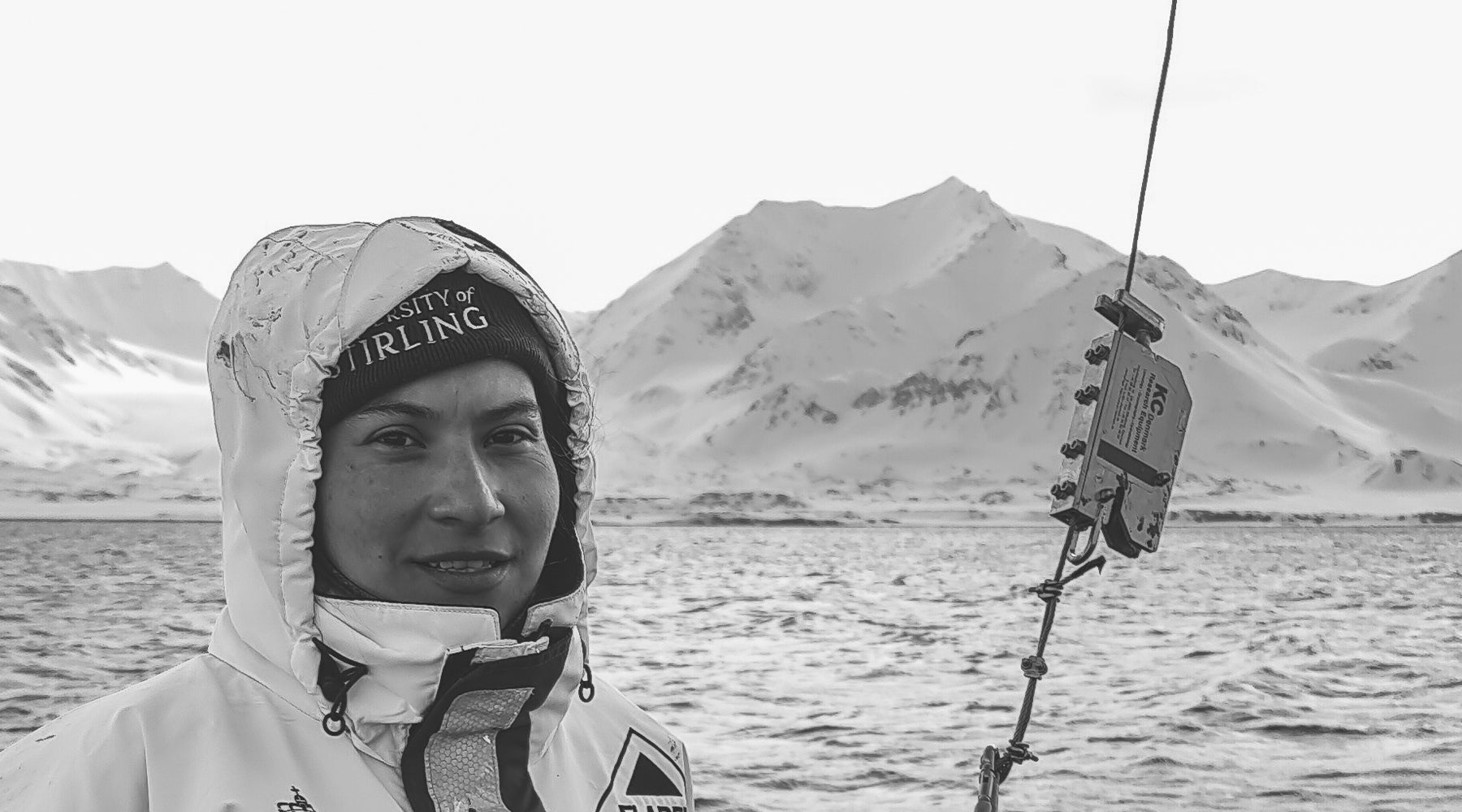
SHACKLETON MEDAL: Meet The Shortlist - Felicity Aston
The shortlist for the Shackleton Medal for the Protection of the Polar Regions 2024 was announced on 24th April 2024, following an animated debate at the Royal Geographical Society, chaired by Sunday Times bestselling author Lewis Dartnell. In our latest journal series we meet each of the inspiring individuals from the shortlist. Here, Explorer and Research Scientist, Felicity Aston answers questions from Rachel Halliburton about the ultimate polar mic-drop and the rapid pace at which the poles are changing.

“I could talk about the pain of getting out of an ice-encrusted sleeping bag into the deep cold of the Arctic Ocean; the heart-stopping moment of crossing a crevasse when alone or spotting a polar bear when on foot… but the truth is that these things are all the fun part.” Felicity Aston
What was it that first captured your imagination about the polar regions?
The white of the snow! Growing up, my father had a big coffee table-type book about Antarctica. The stories of adventure and the images of a landscape that seemed so untouched and unexplored stayed with me. Years later when I first travelled to Antarctica, the perfection of the snow and the ice brought on a sense of euphoria – it was all so clean and unspoilt – it felt like it was a place where things were still the way they were supposed to be, beyond the excess of humankind. Sadly, I now know that the polar environment is not as ‘pure’ as it appears to be and the revealing of this infiltration of the world’s pollution has been a large motivation of my scientific work.
The polar regions continue to inspire me by being a huge source of hope. Being in the polar environment makes me aware of the scale of the forces of nature on our planet and how tiny and insignificant we are as human beings in comparison – and yet simultaneously, it reminds me of how incredible we are as a species to not only be able to find ways to survive these formidable environments but to start to understand them and protect them. It gives me faith that we have the collective intelligence and capability to find solutions to the problems faced by the planet.

What detail about your work most surprises people?
Environmental change and climate are often described in terms of the future. Many people still consider the predicted consequences of climate change to be a hypothetical future event and are surprised when I refer to such things not in terms of the future or present but as historical fact already in our past!
Since skiing to the North Pole in 2018 I have talked a lot about how it is no longer possible to make journeys across the Arctic Ocean like those made by Sir Wally Herbert in 1969. I explain how, in the space of 50 years, we have gone from the ‘first’ to ski to the North Pole to potentially the last. While people may not care that explorers can’t plant flags at the top of the world anymore, they are shocked by the speed of change in the polar regions. This story of exploration has the ability to drive home the urgency of the climate problem we are facing.
What technological advance has proved a real game changer?
It used to be that explorers would disappear to the polar regions and the world would have to wait three, four years or more for their return in order to hear anything about the expedition (if the explorers ever made it back at all!).
Back in 2009 I led a ski expedition to the South Pole that was able to send tweets via a satellite phone so that a global audience could follow our journey as it happened. Fifteen years on, I have just returned from a ski expedition on the Arctic Ocean during which we sent messages and images from our tent via WhatsApp to our team avatar on an interactive map that anyone could access online to see exactly where we were at any given moment, overlaid with the latest sea ice conditions.
Applications on our smartphones enabled us to synchronise with passing remote sensing satellites in order to record polar clouds, snow cover and albedo from the ground as the satellites simultaneously recorded the same information from space. What is more, anyone could do the same from wherever they were on the globe using the same citizen science apps. This ability to contribute is the ultimate engagement, demonstrating that we all have the ability to be scientists and to make a difference.
Satellite communications and online media have revolutionised the ability to share exploration in new and inventive ways. We can engage broader audiences from around the world in almost real time, not just to share an expedition or a specific environment but also to leverage deeper understanding of the science conducted and the various issues a project intends to address, generating a new wave of citizen scientist recruits along the way. The potential is exciting and marvellous to me.
I’m also hugely excited by the advent of new materials that recycle or replace plastics. During my most recent polar journeys we have been trialling equipment constructed from a fabric manufactured entirely from plastics reclaimed from the sea. We’ve also been testing plastic alternatives, such as a material and an ink made from carbon that has been sequestered from the atmosphere. Partnered with a renewed preference for natural fibres, I hope such exciting innovations are an indication of a shift in the way we think about resources and technology in materials and equipment.

What is the toughest challenge you have faced and how did you overcome it?
I could talk about the physical challenges; the pain of getting out of an ice-encrusted sleeping bag into the deep cold of the Arctic Ocean; the heart-stopping moment of crossing a crevasse when alone or spotting a polar bear when on foot; the constant stress of solving infinite problems while trying to collect samples in the field around relentless bad weather and mechanical malfunctions – but the truth is that these things are all the fun part! In both exploration and science, the challenge is by design!
The less-fun bit (and therefore the real challenge I think) is the part that most people don’t get to see. The months and years of raising funds and gathering support; the endless hours in a lab or in front of a computer compiling spreadsheets; the navigation and management of the dynamics of a team. The maintenance of the motivation it takes to keep this up year after year is really tough and only ever gets harder.
I have tried to overcome this challenge in ways that continue to evolve – I remember successes of the past to remind myself of my own capability; I surround myself with people of action and positivity that inspire me; I remind myself of the purpose of it all and keep those thoughts close to mind; I think of the generosity and belief of those who have funded or supported a project and the dedication and brilliance I have witnessed in those I have travelled with to instil a sense of responsibility in myself to keep the faith; and I remember how being in the polar environment makes me feel – it is perhaps the environment itself that provides the greatest motivation.

What has been the most rewarding moment for you in your work?
The feeling of satisfaction and reward that you get in the first few days on return from a successful expedition is hard to beat and I’ve discovered it is a feeling enhanced by returning with a cargo of scientific samples destined for analysis that you know will lead to some greatly valued research.
Back in April 2023 I returned from a ski expedition (part of the current B.I.G. Expedition project) across the northernmost glacier in Iceland with four storage boxes filled with the samples we had collected. The expedition had been a struggle from the start. A startling lack of snow had forced us to carry our sledges over heath and rivers to reach the glacier, then too much snow had buried our tents in two days of furious storm. That Icelandic speciality of wet then freezing conditions continued to make life difficult throughout the entire expedition, in addition to near-constant whiteout. Sticking to an ambitious sampling methodology in Tyvek clean suits and nitrile gloves in whiteout and windstorm on hands and knees for hours at a time on the summit of a remote glacier had us often questioning our life choices – but coming off that glacier with four black boxes of hard-won samples was one of the best feelings ever. It felt like the ultimate mic drop. We had done something new, something that opened up all sorts of future possibilities and something that made a very real and valuable contribution. We each felt a huge sense of pride. It was a wonderful moment of satisfaction that will stay with me.

What message would you give to people trying to do what you do?
Make a start. It is all too easy to give yourself lots of very good reasons why you should put off making that first step, why it would be better to wait – but the truth is that there is never a perfect time to do anything. No matter how small your first step might be, the perfect time is right now.
Then, once you make a start, keep going. The amount of progress you make is not as important as the ability to keep making some progress, however small. That perseverance always brings reward in the end and it will get you to wherever it is you want to be.
Learn more about Felicity Aston here.


